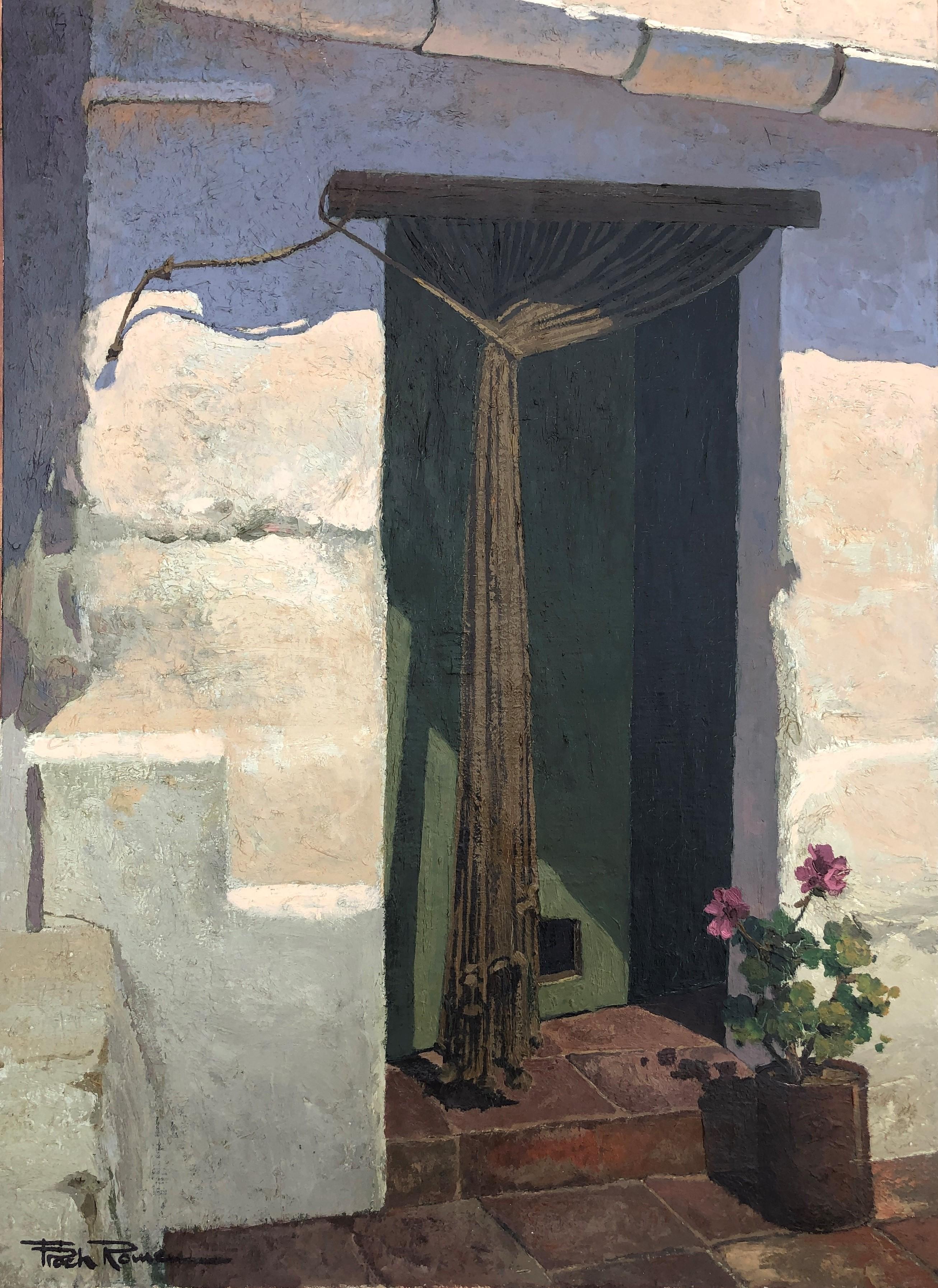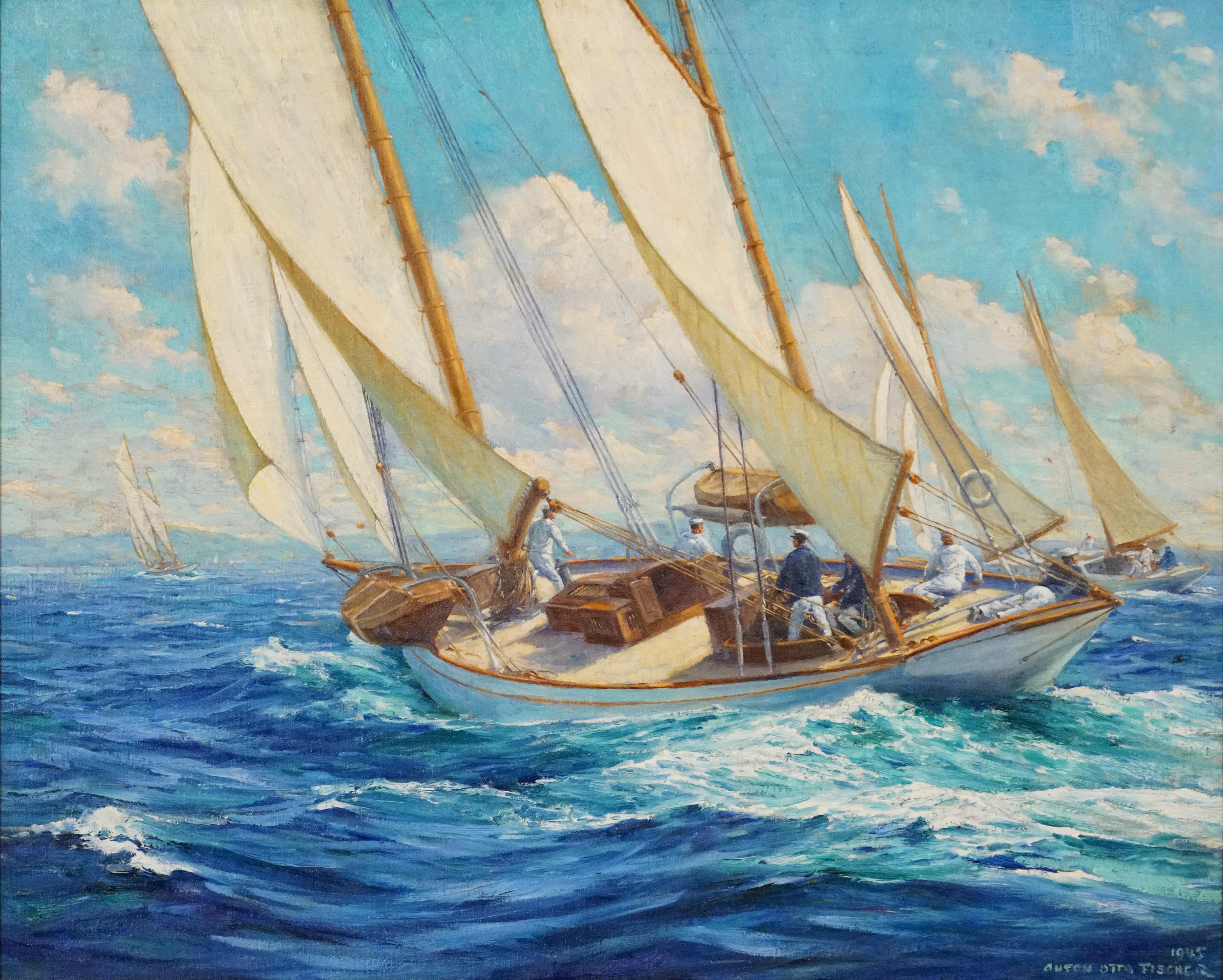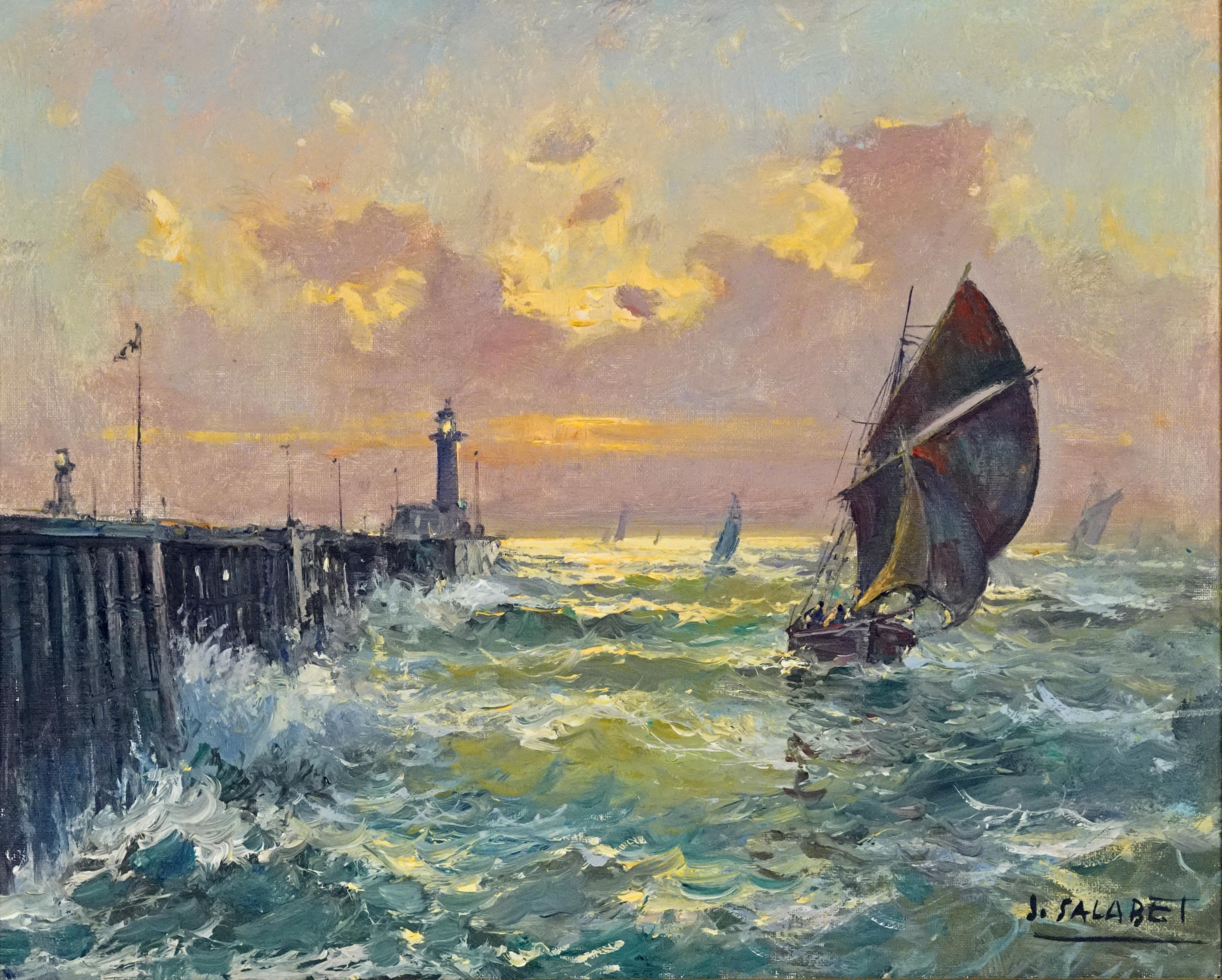Items Similar to Marche des Fleurs Devant La Madeline
Want more images or videos?
Request additional images or videos from the seller
1 of 6
Charles BlondinMarche des Fleurs Devant La Madeline
About the Item
Charles Blondin
French, 1913-1991
Marche des Fleurs Devant La Madeline
Oil on canvas
Signed lower right
11 by 14 in. W/frame 16 by 19 in.
A "School of Paris" artist during the mid-20th century, Charles Blondin became known for his Paris street scenes. In an impressionistic style, Blondin worked with warm, colorful palettes that capture the life and light of French summers. His work appears all across the world in galleries and collections.
Provenance:
Private Collection Los Angeles
Le Trianon Fine Art & Antiques
- Creator:Charles Blondin (1913 - 1991, French)
- Dimensions:Height: 16 in (40.64 cm)Width: 19 in (48.26 cm)Depth: 2 in (5.08 cm)
- Medium:
- Movement & Style:
- Period:
- Condition:Painting in excellent condition frame has some minor paint chips consistant with age.
- Gallery Location:Sheffield, MA
- Reference Number:
About the Seller
3.7
Vetted Seller
These experienced sellers undergo a comprehensive evaluation by our team of in-house experts.
1stDibs seller since 2017
46 sales on 1stDibs
Typical response time: Several days
- ShippingRetrieving quote...Ships From: Sheffield, MA
- Return PolicyThis item cannot be returned.
More From This SellerView All
- Summer SeasBy Anton Otto FischerLocated in Sheffield, MAAnton Otto Fischer American 1882 - 1962) Summer Seas Oil on canvas 1945, signed 'Anton Otto Fischer' and dated lower right, Inscribed 'Summer Seas by Anton Otto Fischer' on the reverse. 26 x 32 in. W/frame 32 1/2 x 38 1/2 in. Best known for his Gloucester, Massachusetts fishing scenes, war...Category
1940s Post-War Landscape Paintings
MaterialsOil
- Lighthouse At FecampBy Jean SalabetLocated in Sheffield, MAJEAN SALABET French B.1900 Lighthouse At Fecamp Oil on canvas Signed lower right 13 by 16 in. W/frame 19 by 22 in. Jean Salabet was a School of Paris painter know for his colorfu...Category
1950s Post-War Landscape Paintings
MaterialsOil
- Aux CafeBy Charles BlondinLocated in Sheffield, MACharles Blondin French, 1913-1991 Aux Cafe Oil on canvas Signed lower right 11 by 14 in. W/frame 16 by 19 in. A "School of Paris" artist during the mid-20th century, Charles Blond...Category
1950s Post-War Landscape Paintings
MaterialsOil
- Montmartre -La Place Dutertre, Paris 1952By Jean SalabetLocated in Sheffield, MAJean Salabet French, 20th Century Montmartre Jean Salabet was a School of Paris painter know for his colorful Parisian cityscapes. His work is comparable to those of Jules Herve, An...Category
1950s Post-Impressionist Landscape Paintings
MaterialsOil
- Woman and ChildBy John Edward CostiganLocated in Sheffield, MAJohn Edward Costigan, N.A. American, 1888-1972 Woman and Child Oil on canvas Signed ‘J.E. Costigan N.A.’ lower left 24 by 30 in. W/frame 32 by 38 in. John Costigan was born of Irish-American parents in Providence, Rhode Island, February 29, 1888. He was a cousin of the noted American showman, George M. Cohan, whose parents brought the young Costigan to New York City and was instrumental in starting him on a career in the visual arts. They were less successful in encouraging him to pursue formal studies at the Art Students League (where, however, he later taught) than in exposing him to the commercial art world through the job they had gotten him with the New York lithographing firm that made their theatrical posters. At the H. C. Miner Lithographing Company, Costigan worked his way up from his entry job as a pressroom helper, through various apprenticeships, to the position of sketch artist. In the latter capacity he was an uncredited designer of posters for the Ziegfeld Follies and for numerous silent films. Meanwhile, he had supplemented his very meager formal studies in the fine arts with a self-teaching discipline that led to his first professional recognition in 1920 with the receipt of prizes for an oil painting and watercolor in separate New York exhibitions. A year earlier, Costigan had wed professional model Ida Blessin, with whom he established residence and began raising a family in the sleepy little rural New York hamlet of Orangeburg, the setting for the many idyllic farm landscapes and wood interiors with which he was to become identified in a career that would span half a century. John Costigan’s first national recognition came in 1922 with his winning of the coveted Peterson Purchase prize of the Art Institute of Chicago for an oil on canvas, “Sheep at the Brook.” It marked the start of an unbroken winning streak that would gain him at least one important prize per year for the remainder of the decade. The nation’s art journalists and critics began to take notice, making him the recurring subject of newspaper features and magazine articles. The eminent author and critic Edgar Holger Cahill was just a fledgling reporter when he wrote his first feature, “John Costigan Carries the Flame,” for Shadowland Magazine in 1922. Costigan had his first one-man show of paintings at the Rehn Gallery on New York’s 5th Avenue in November, 1924, to be followed less than three years later by another at the Art Institute of Chicago. In addition, Costigan’s work has been—and continues to be included, side-by-side with that of some of America’s most high-profile artists, in museum and gallery exhibitions throughout the country. His renown had peaked in the early 1930s, by which time his work had been honored with nearly every major award then being bestowed in the fine arts and had been acquired for the permanent collections of several prestigious American museums, including New York’s Metropolitan (which only recently, in 1997, deaccessioned his “Wood Interior,” acquired in 1934). Although Costigan’s celebrity had ebbed by the late 1930s, the Smithsonian Institution saw fit in 1937 to host an exhibition exclusively of his etchings. And, in 1941, the Corcoran Gallery (also Washington, D.C.) similarly honored him for his watercolors. (Another Washington institution, the Library of Congress, today includes 22 Costigan etchings and lithographs in its permanent print collection.) During World War II, Costigan returned briefly to illustrating, mainly for Bluebook, a men’s pulp adventure magazine. A gradual revival of interest in his more serious work began at the end of the war, culminating in 1968 with the mounting of a 50-year Costigan retrospective at the Paine Art Center and Arboretum in Oshkosh, Wisconsin. Oils, watercolors and prints were borrowed from museums and private collections throughout the country, and the exhibition was subsequently toured nationally by the Smithsonian Institution. John Costigan died of pneumonia in Nyack, NY, August 5, 1972, just months after receiving his final prestigious award —the Benjamin West Clinedinst Medal of the Artist’s Fellowship, Inc., presented in general recognition of his “...achievement of exceptional artistic merit...” in the various media he had mastered in the course of his career. This painting depicts one of the artist's favorite themes --the farm family bathing...Category
1940s Post-Impressionist Landscape Paintings
MaterialsOil
- Mother & Child in a Landscape, framed in an important Carrig Rohane frameBy André GissonLocated in Sheffield, MAAndre Gisson American, 1921-2003 Mother & Child in a Landscape Oil on canvas 24 by 36 in. W/frame 32 by 44 in. Signed lower left Framed in an important Carrig Rohane frame...Category
1960s Post-Impressionist Landscape Paintings
MaterialsOil
You May Also Like
- Gondolas in Venice Italy oil on canvas paintingBy Jose Luis Florit RoderoLocated in Barcelona, BarcelonaJosé Luis Florit Rodero (1909-2000) - Venice Venezia Italy - Oil on canvas Oil measures 50x61 cm. Frameless. José Luis Florit Rodero (Madrid, 1909-Pa...Category
1980s Post-War Landscape Paintings
MaterialsOil, Canvas
- Menorca portal Spain oil on canvas paintingBy Francesc Poch RomeuLocated in Barcelona, BarcelonaPoch Romeu was one of the most relevant and renowned landscape painters who originated in the second half of the 20th century. His technique was oil on can...Category
1980s Post-War Landscape Paintings
MaterialsOil, Canvas
- Industry Along the RiverBy Joseph WolinsLocated in Wiscasett, MESigned lower left, dimensions listed include the frame. Joseph Wolins was born in Atlantic City, New Jersey in 1915. He studied at the National Academy of Design from 1935 to 1941 un...Category
1950s Post-War Landscape Paintings
MaterialsOil
- Electro Car Go (American Post-War, Impressionist, Boston, Streetcar, Tram)Located in Kansas City, MOAlex Tschernjawski Electro Car Go (American Post-War, Impressionist, Boston, Streetcar, Tram, Cityscape, Blue Hill, Dorchester, Mattapan Square, Fra...Category
1960s Post-War Landscape Paintings
MaterialsCanvas, Oil
- Winter's Snowy Tatra Mountains with Pines and StreamBy Laszlo NeogradyLocated in Soquel, CAWinter's Snowy Tatra Mountains with Pines and Stream Beautiful post-war winter snowy scene with mountains and pine by Laszlo Neogrady (Hungarian, 1896-1962), circa 1940. Lovely textu...Category
1940s Post-War Landscape Paintings
MaterialsLinen, Oil
- Mid Century Mexican Street Scene -- Jardin Del ArteLocated in Soquel, CAWonderful mid century Mexico street scene by Hector Lara Orozco (Mexican, 1892 - 1958), 19a65. Orozco is a Mexican postwar & contemporary artist. Unfra...Category
1960s Post-War Landscape Paintings
MaterialsLinen, Oil




